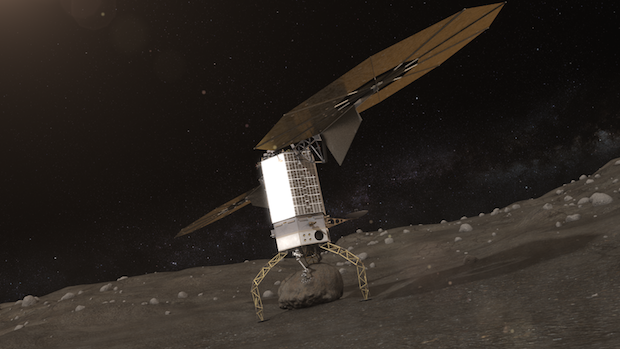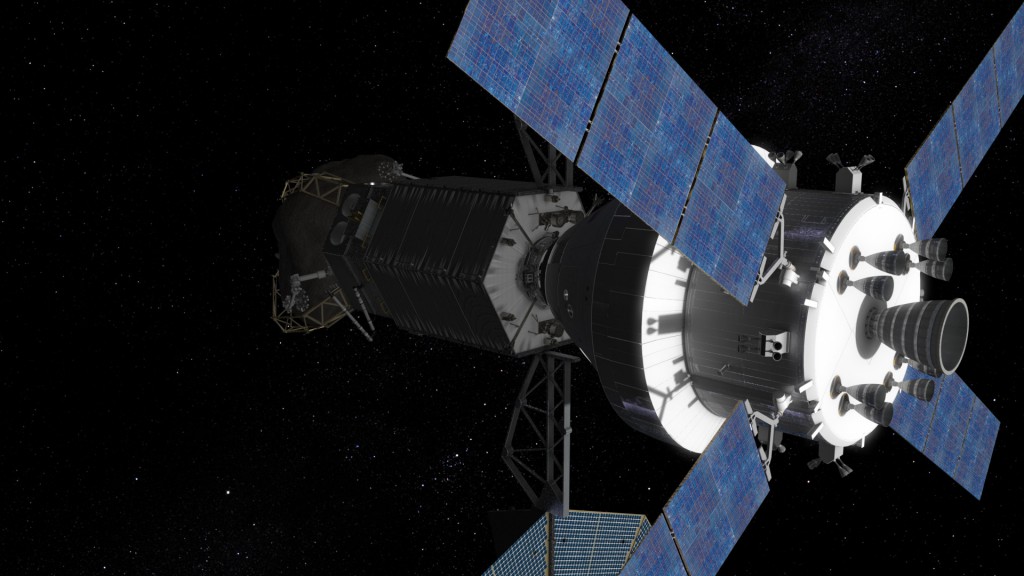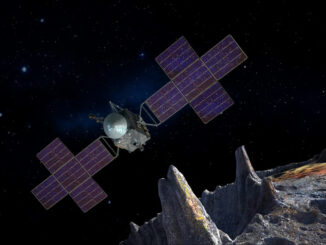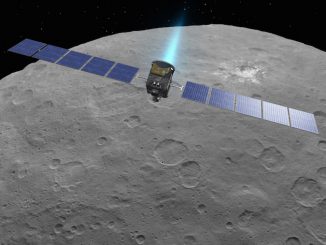STORY WRITTEN FOR CBS NEWS “SPACE PLACE” & USED WITH PERMISSION

After an extended review, NASA has opted to forgo capturing a small asteroid as an interim step on the road to sending astronauts to Mars. Instead, the agency will focus on robotically plucking a sizable boulder from the surface of an asteroid and returning it to the vicinity of the moon for analysis by spacewalking astronauts in the mid 2020s, officials said Wednesday.
Agency managers said the mission will serve as a testbed for technologies needed for eventual deep space missions, give NASA astronauts experience interacting with another body, provide new insights into the birth and evolution of the solar system and shed light on what might be needed to someday divert an asteroid on a collision course with Earth.
“When you think about what we’re trying to do with this Asteroid Redirect Mission, it’s bringing together the best of NASA’s human exploration, its science portfolio, technology portfolio and really gives us an opportunity to demonstrate capabilities we’re going to need for future human missions beyond low-Earth orbit and then ultimately, to Mars,” said Robert Lightfoot, the NASA manager overseeing the project.
The Asteroid Redirect Mission, or ARM, is the centerpiece of the Obama administration’s post-shuttle, post-space station plan to send astronauts beyond low-Earth orbit, bypassing the moon in favor of one or more piloted flights to get hands-on experience with a nearby asteroid in the mid 2020s. NASA’s long-range goal is a flight to orbit or land on Mars in the 2030s.
The ARM project has drawn fire from many space advocates and scientists who argue it is not necessary and that NASA’s time and money would be better spent on a return to the moon to perfect the technologies needed for eventual Mars missions.
In any case, NASA managers and engineers have been studying two basic ARM options. In one, an entire asteroid would be captured and hauled back to the vicinity of the moon for detailed study by astronauts using NASA’s new Orion crew capsule. The other option calls for collecting a large boulder as a more manageable, representative sample.
NASA managers met Tuesday and selected Option B, deciding it offered the best chance for success and a better fit with the agency’s long-range plans.
“At the end of the day, we selected the option (where) we’re going to go to an asteroid and take a boulder off of it,” Lightfoot told reporters during an afternoon teleconference. “Let’s get on with it, so we can get this next key step in our journey to Mars moving on.”
As it now stands, NASA envisions launching a robotic spacecraft in late 2020 that would use solar-electric propulsion to rendezvous with a targeted asteroid, beaming back high-resolution pictures and other data to help engineers identify boulders, measuring up to 4 meters, or 13 feet across, that would be suitable for capture.
Three candidate asteroids already have been identified with more expected by 2019, when NASA will have to make a selection.
The robotic spacecraft, currently cost capped at $1.25 billion — not counting the price of its booster — will feature a robotic grapple system to lock onto the selected boulder. It then would pull away and maneuver into a so-called halo orbit around the asteroid, spending up to 400 days in the immediate vicinity. That will provide time for scientists and engineers to determine whether the mass of the spacecraft and boulder are enough to slowly nudge the asteroid into a slightly different trajectory.
The “gravity tractor” technique could prove useful in the future for diverting an approaching asteroid, assuming it was spotted in time.
In any case, once the gravity tractor research is complete, the ARM spacecraft will return to the vicinity of the moon and move into a stable orbit.

That phase of the mission will take about five years to complete, Lightfoot said. At that point, in mid to late 2025, NASA would launch two astronauts aboard an Orion spacecraft and Space Launch System booster to rendezvous with the robotic spacecraft and its captured boulder, moving in for a docking at an attachment fixture on the unpiloted spacecraft.
The astronauts then could carry out spacewalks to collect samples for return to Earth while spending more than three weeks attached to the robotic spacecraft.
“The Asteroid Redirect Mission will provide an initial demonstration of several spaceflight capabilities we will need to send astronauts deeper into space, and eventually, to Mars,” Lightfoot said in a statement. “The option to retrieve a boulder from an asteroid will have a direct impact on planning for future human missions to deep space and begin a new era of spaceflight.”
He said an “acquisition strategy” meeting is planned for July to discuss how to develop and procure the needed technology while an integrated requirements review will be carried out to refine cost projects and the schedule.



